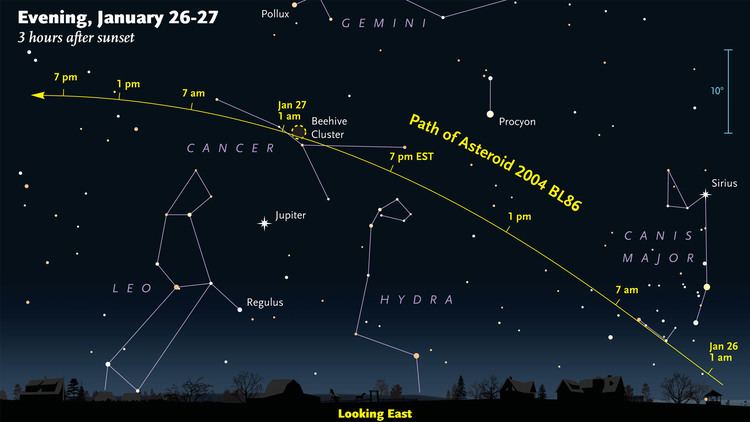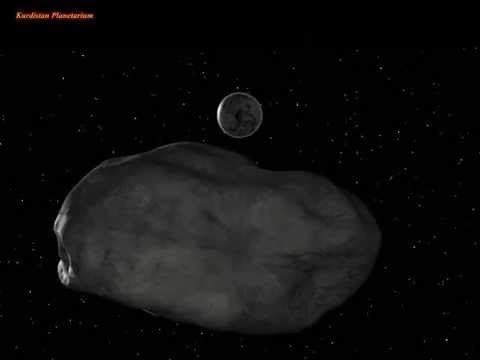Discovered by LINEAR (704) MPC designation (357439) 2004 BL86 Observation arc 4084 days (11.18 yr) Discovered 30 January 2004 Argument of perihelion 311.44162° | Discovery date 30 January 2004 Minor planet category Apollo NEO,PHA Aphelion 2.1069 AU (315.19 Gm) Inclination 23.77604° Spectral type V-type asteroid | |
 | ||
Similar (137108) 1999 AN10, 2015 TB145, 2014 YB35, 367943 Duende, 1566 Icarus | ||
(357439) 2004 BL86, provisionally known as 2004 BL86, is a near-Earth asteroid estimated to be about 325 meters (1,066 feet) in diameter. It was discovered on 30 January 2004 by LINEAR. It passed 1,199,600 km (745,400 mi), or 3.1 lunar distances, from Earth on 26 January 2015 at 16:20 UTC. During the 2015 approach it was determined to have a satellite.
Contents
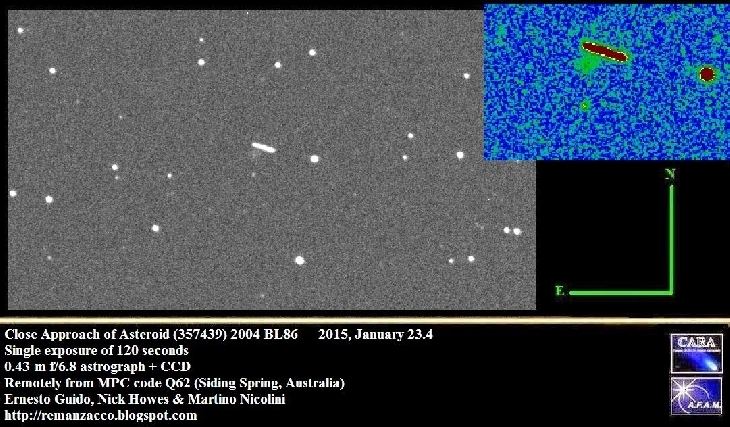
2015 Earth approach
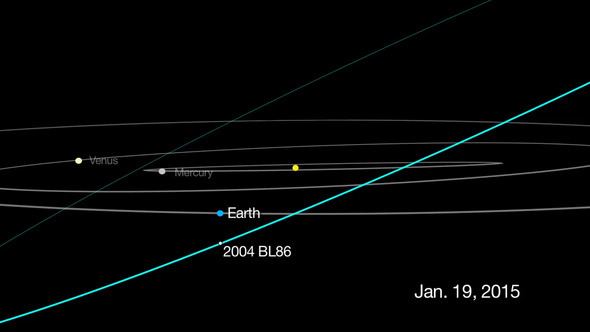
On 26–27 January 2015, the asteroid briefly peaked around apparent magnitude 9 and was near the celestial equator. The asteroid was visible in telescopes with objectives of 100 mm (4 in) or larger; high-end binoculars under a dark sky may also have worked. Near closest approach the asteroid was moving about 2.5 degrees per hour (2.5 arcseconds per second). The asteroid came to opposition (furthest elongation in the sky from the Sun) on 27 January 2015 at 04:37 UTC. Around 5:00 UTC, the asteroid was near M44 (the Beehive Cluster).
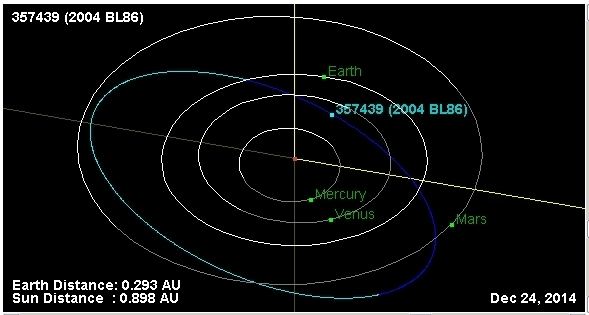
26 January 2015 approach of 3.1 lunar distances was the closest approach of 2004 BL86 for at least the next 200 years. For comparison, 2015 TB145 about twice the size of 2004 BL86, passed 486,800 km (302,500 mi), or 1.3 lunar distances, from Earth on 31 October 2015.
Satellite
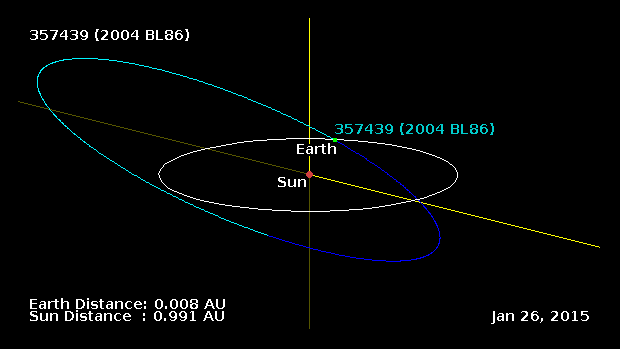
A satellite was first detected by ground-based telescopes by Joe Pollock and Petr Pravec. Observations by the Goldstone Deep Space Communications Complex and Green Bank Telescope confirmed that it is a binary asteroid with a secondary roughly 70 meters (230 feet) across. The secondary is estimated to orbit at least 500 metres (1,600 ft) from the primary. About 16% of asteroids over 200 metres (660 ft) in diameter are thought to be binaries.

